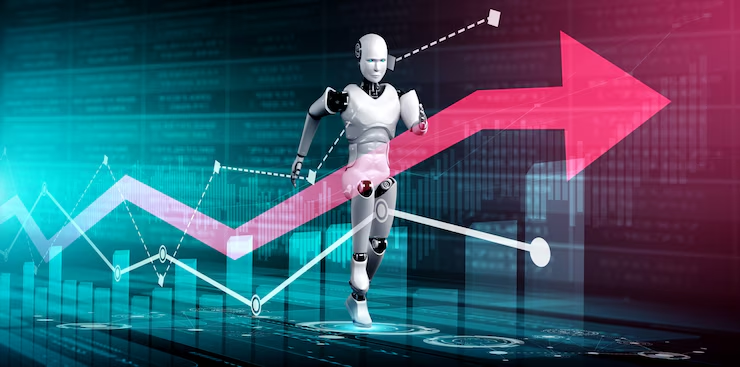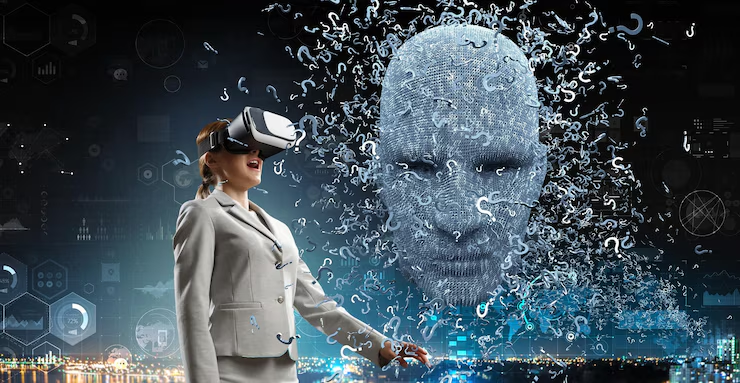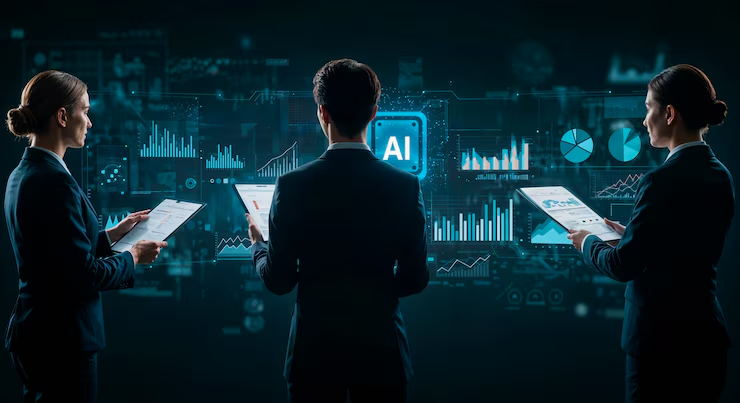Artificial Intelligence (AI): Shaping the Future of Technology and Humanity
Introduction :
Artificial Intelligence (AI) is one of the most groundbreaking technological advancements of the 21st century. From smart virtual assistants to autonomous vehicles, AI is transforming the way we live, work, and interact with machines. What was once considered science fiction has now become an integral part of our daily lives. AI’s potential stretches across nearly every industry, including healthcare, education, finance, agriculture, cybersecurity, entertainment, and manufacturing.
In this comprehensive blog, we will explore what AI is, how it works, its various types, real-world applications, benefits, challenges, and its future potential. If you're passionate about technology, this deep dive into AI will show you how it’s reshaping the present and building the future.
________________________________________
What is Artificial Intelligence (AI)?
Artificial Intelligence refers to the simulation of human intelligence by machines, especially computer systems. It includes the ability of machines to perform tasks typically requiring human cognition, such as learning, reasoning, problem-solving, perception, language understanding, and decision-making.
AI is not just one technology, but a collection of technologies, including:
• Machine Learning (ML)
• Natural Language Processing (NLP)
• Computer Vision
• Expert Systems
• Robotics
________________________________________
Types of Artificial Intelligence
AI can be classified based on its capabilities and functionalities:
1. Based on Capabilities:
a) Narrow AI (Weak AI)
• Designed for a specific task.
• Most current AI systems fall under this category.
• Examples: Siri, Google Translate, Recommendation Systems.
b) General AI (Strong AI)
• Can perform any intellectual task that a human can.
• Still theoretical; researchers are working toward it.
c) Super AI
• Exceeds human intelligence.
• Hypothetical and could change the course of human existence.
2. Based on Functionalities:
a) Reactive Machines
• Do not store memories or past experiences.
• Example: IBM’s Deep Blue chess-playing computer.
b) Limited Memory
• Can use past experiences to make decisions.
• Example: Self-driving cars.
c) Theory of Mind
• Understand emotions, beliefs, and human interactions.
• Still under research.
d) Self-Aware AI
• Possess self-consciousness.
• The most advanced and theoretical stage.
________________________________________
How AI Works
AI works by combining large volumes of data with fast, iterative processing and intelligent algorithms. Here’s a simplified breakdown:
1. Data Collection
o AI systems learn from huge datasets (images, text, voice, etc.).
2. Algorithm Development
o Developers create learning models using mathematical algorithms.
3. Training
o AI systems learn patterns in data through supervised or unsupervised learning.
4. Prediction/Inference
o Trained models make predictions or take actions based on new inputs.
5. Feedback Loop
o The system uses new data to improve accuracy over time.
________________________________________
Real-World Applications of AI
1. Healthcare
• AI-powered diagnostics, robot-assisted surgeries, and predictive analytics.
• Chatbots and virtual health assistants improve patient care.
• AI detects diseases like cancer, Alzheimer’s, and COVID-19 in early stages.
2. Finance
• Fraud detection using pattern recognition.
• Algorithmic trading for financial markets.
• AI-driven chatbots for customer service in banks.
3. Education
• Personalized learning experiences.
• Automated grading and performance tracking.
• Virtual tutors and AI teaching assistants.
4. Agriculture
• Predictive analytics for crop yield.
• Smart irrigation and weather forecasting.
• Drones for field monitoring and precision farming.
5. Transportation
• Self-driving cars use AI for perception and navigation.
• AI manages smart traffic systems and logistics.
• Predictive maintenance in vehicles and aircraft.
6. Cybersecurity
• AI detects malware and abnormal behavior in real-time.
• Threat analysis and security automation.
• Reduces response time to cyber threats.
7. Entertainment
• Content recommendation on platforms like Netflix and YouTube.
• AI-generated music, videos, and artworks.
• Virtual reality (VR) enhanced by AI interaction.
8. Manufacturing
• Predictive maintenance of machines.
• Quality control using computer vision.
• Automation of repetitive tasks using robots.
________________________________________
Benefits of Artificial Intelligence
✅ Increased Efficiency
AI can handle repetitive tasks 24/7 without fatigue, improving productivity and reducing costs.
✅ Enhanced Accuracy
AI systems analyze massive data with precision and consistency.
✅ Data-Driven Decision Making
AI extracts insights from big data that humans can't process alone.
✅ Automation of Routine Tasks
From email sorting to driving, AI automates everyday tasks, freeing humans for creative work.
✅ Innovation Across Industries
AI is the backbone of innovations in healthcare, transportation, fintech, and more.
________________________________________
Challenges and Ethical Concerns
❌ Job Displacement
AI may automate jobs, leading to unemployment in some sectors.
❌ Bias and Discrimination
AI can inherit bias from training data, leading to unfair outcomes.
❌ Privacy Issues
Data-hungry AI systems raise serious concerns about user privacy.
❌ Security Risks
AI can be exploited to create deepfakes, launch cyberattacks, or manipulate information.
❌ Regulatory Hurdles
Lack of global AI regulations makes ethical deployment a challenge.
________________________________________
AI vs. Human Intelligence
Feature Artificial Intelligence Human Intelligence
Learning Ability Data-driven, needs training Experience and instinct
Creativity Limited High
Emotional Intelligence Absent or simulated Naturally present
Speed Faster in computation Slower but intuitive
Adaptability Depends on updates Instinctively adaptive
________________________________________
AI and the Future of Work
AI will not necessarily eliminate jobs—it will change them:
• New roles like AI trainers, data ethicists, and machine learning engineers are emerging.
• Workers will need to adapt by learning new skills such as data analysis, coding, and AI integration.
• Human-AI collaboration will become the norm, where AI handles the data, and humans apply critical thinking.
________________________________________
The Future Trends of AI
🔍 Explainable AI (XAI)
Understanding how AI makes decisions will become essential for transparency.
🧠 AI in Mental Health
AI chatbots and sentiment analysis will help detect early signs of depression or stress.
🌐 AI in Climate Change
AI helps monitor deforestation, carbon emissions, and optimize renewable energy usage.
📱 Edge AI
Processing AI data on the device itself, rather than relying on cloud servers, ensures speed and privacy.
🛡️ Ethical AI Development
More focus will be on building AI systems that align with human values, ethics, and fairness.
________________________________________
Global Impact of AI
• Education Systems are being redesigned for digital classrooms.
• Healthcare Access is improving in remote areas via AI diagnostics.
• Smart Cities are becoming a reality, using AI for public safety, energy usage, and traffic management.
• Economic Growth is being fueled by AI innovations in nearly every country.
________________________________________
Conclusion
Artificial Intelligence is not just a futuristic concept—it’s a present-day reality revolutionizing the world. From making everyday tasks more manageable to solving complex global problems, AI has the potential to elevate human capabilities to new heights. However, with great power comes great responsibility.
The path ahead requires careful balancing of innovation and ethics, efficiency and employment, and automation and accountability. As we continue to develop and deploy AI technologies, it’s crucial to ensure they are transparent, inclusive, and aligned with the greater good.
The AI-driven future is exciting—and we are just at the beginning of what it can achieve.


